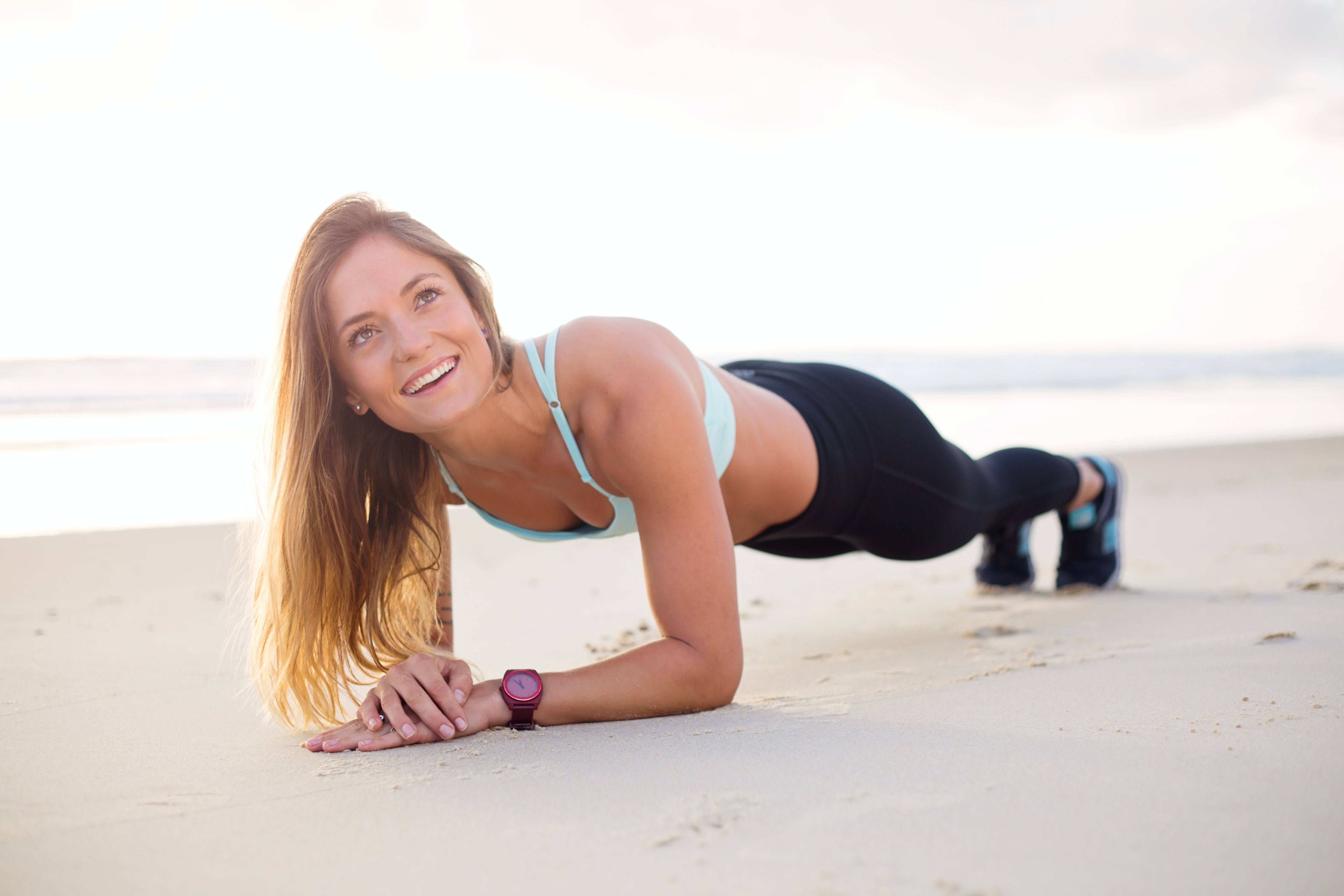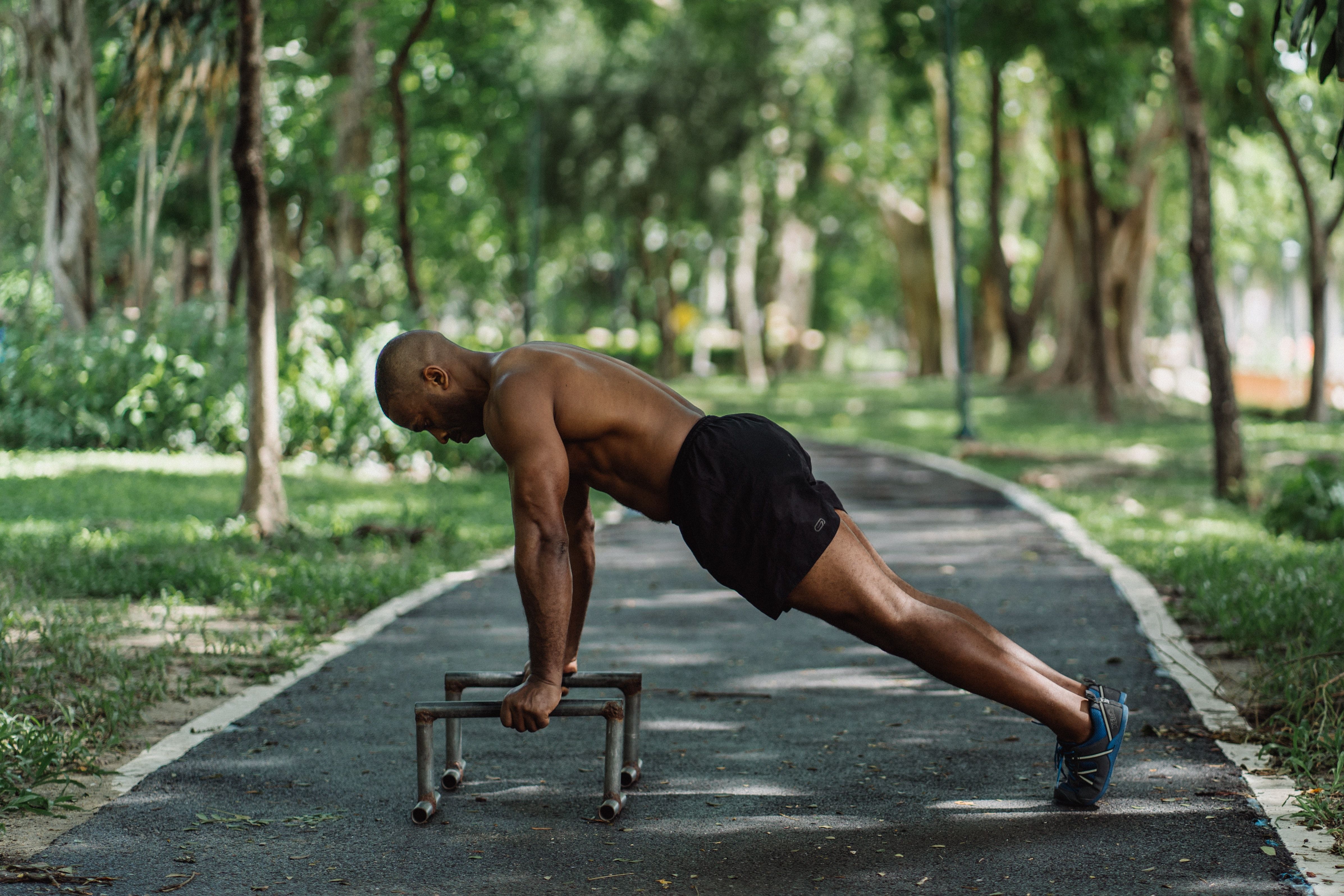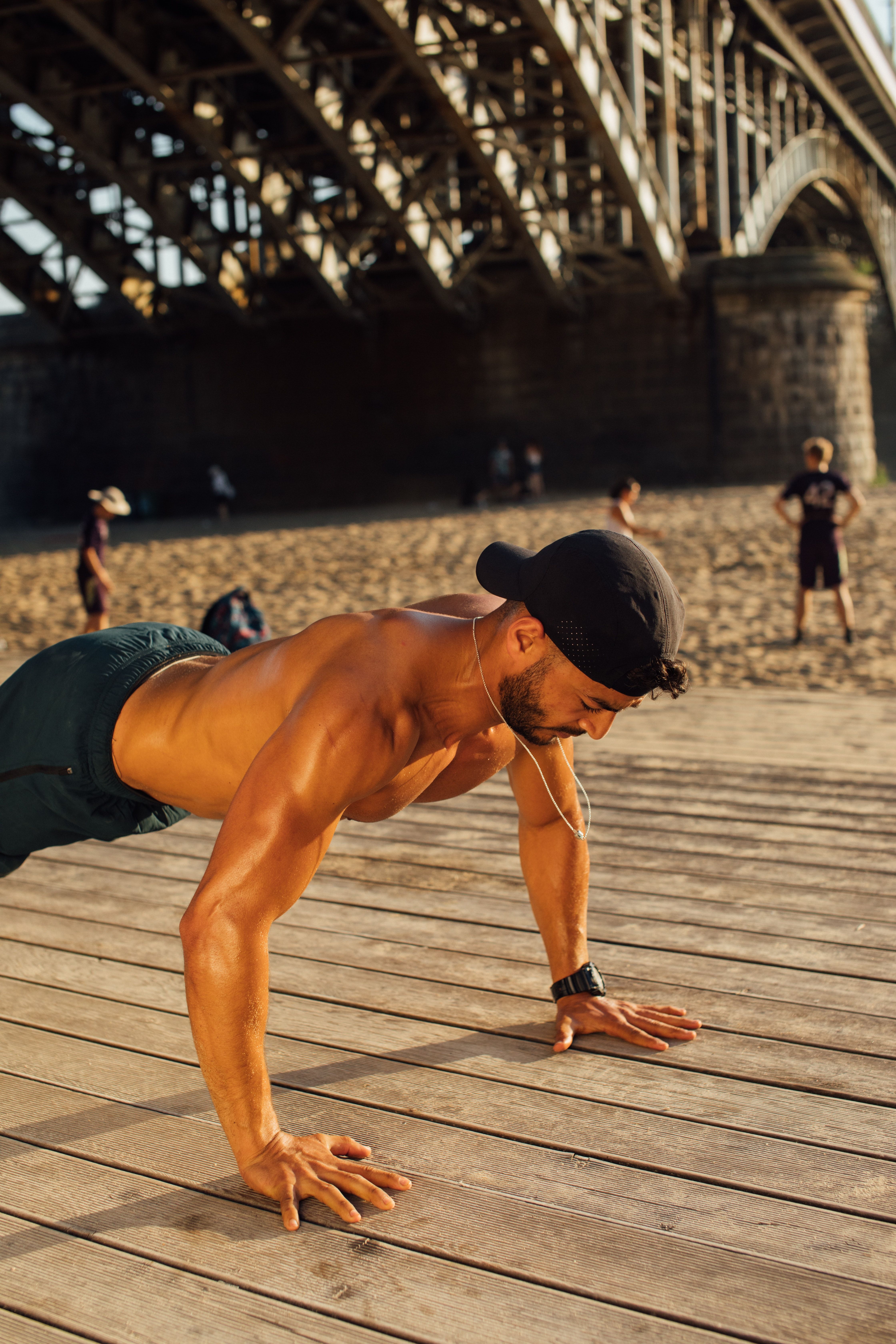Methods, Types, Advantages of Push-Ups



Push-ups are a sort of bodyweight exercise that mainly works the muscles in the upper body, such as the chest, shoulders, and triceps. In order to raise and lower your body weight, you must push your body up and down while holding a plank posture. Push-ups are a simple and adaptable workout that can be done at all fitness levels.

It's critical to do push-ups correctly to get the most benefit and prevent harm. Here is a step-by-step instruction sheet with suggestions for proper push-ups:
Basic Push-Up Technique
Starting Position:
- Start off with your hands slightly wider than shoulder-width apart in a high plank stance. In a neutral position, your shoulders and wrists should line up.
- From your heels to your head, your body should be in a straight line. For this alignment to last, engage your glutes and core.
Movement:
- Bend your elbows to bring your body closer to the ground. Maintain a 45-degree angle between your elbows and your body. Keep your elbows from extending to the sides.
- Keep lowering yourself until your chest is barely raised off the floor or touches it softly.
- Keep your body in a straight line during the motion.
Pushing Up:
- Return to the beginning posture by pushing through your palms to extend your elbows. As you push up, keep your body straight.
Tips and Advice for Your Push-Up Routine:
Breathing:
- Breathe in as you bring your body closer to the ground.
- Breathe out as you raise yourself back to the beginning position.
Core Engagement:
- To balance your body, maintain core muscular engagement throughout the exercise.
Hand Placement:
- Try out different hand positions to see what feels most comfortable for you. While some individuals find a wider grip more comfortable, others prefer a narrower grip.
Alignment:
- Keep your body in a straight line from head to heels. Do not allow your lower back to arch excessively or let your hips drop.
Head Position:
- Maintain a neutral head posture and cast a small amount of forward vision. Try not to glance up or tuck your chin in too much.
Elbow Position:
- Maintain a 45-degree angle between your elbows and body to safeguard your shoulder joints.
Full Range of Motion:
- Aim to complete a full range of motion during push-ups, bringing your chest nearly to the floor without losing appropriate form.
Progression:
- To gradually increase strength if you are new to push-ups, start with modified variations such knee push-ups, slope push-ups, or wall push-ups.
- Before going on to more difficult variations as you gain proficiency, focus on upping the repetitions and perfecting your form.
Warm-Up:
- To lower the chance of injury, always warm up your body before performing push-ups. Light aerobics and dynamic stretches can help your muscles warm up.
Rest and Recovery:
- Allow your muscles adequate time to recover between push-up workouts. Overtraining can increase fatigue and injury risk.
Consult a Professional:
Before beginning a new workout regimen, speak with a fitness expert or healthcare physician if you have any pre-existing medical ailments or concerns.

Here is a brief description of some common types of push-ups:
- Standard Push-Up: In order to perform a push-up, you must lower and raise your body from a plank posture. It works the triceps, shoulders, and chest.
- Knee Push-Up: A beginner-friendly variation of the traditional push-up exercise. They are a great starting point for individuals who are building upper body strength, working on proper form, or recovering from injuries.
- Wide Grip Push-Up:Hands spread wider than shoulders highlight the chest muscles while keeping the upper body as a whole engaged.
- Narrow Grip Push-Up:Close hand placement emphasizes the triceps and makes your arms work harder.
- Diamond Push-Up:Using your hands to form a diamond shape engages your chest and shoulders while heavily working your triceps.
- Incline Push-Up:Exercise is made simpler by placing the hands on an elevated platform, making it excellent for novices or those seeking to lessen strain.
- Decline Push-Up: Elevated feet increase the pressure on the upper body, especially the shoulders and chest.
- One-Arm Push-Up:A difficult variation demanding outstanding upper body strength and stability that only uses one arm.
- Clap Push-Up: Building power, strength, and coordination with an explosive push-up and a midair clap.
- Pike Push-Up: Utilizing the downward dog stance, an inverted V-shaped movement targets the shoulders more pronouncedly.
- Archer Push-Up:Focusing on the chest and triceps, perform an asymmetrical push-up with one arm extended and the other bent.
- Hindu Push-Up: The upper body is engaged, and flexibility is increased, by combining a push-up with a dynamic yoga-style exercise..
- Rotating Push-Up:Push-ups with a side plank twist, which target the abs and the stability of the core.
You may adjust your exercises to your fitness objectives and capabilities because each push-up variant offers different advantages and difficulties.
A few pieces of equipment, though, can improve your push-up practice and introduce new obstacles.

Push-up bars, sometimes referred to as push-up handles or push-up stands, are training tools made to increase the comfort and efficiency of push-up activities. They are made up of two handles or bars that raise your hands off the ground to provide you a wider range of motion. They also have the following advantages:
- You may lower your chest to the ground by using push-up bars, which raise your hands. Your muscles may be more effectively engaged and faced with a higher challenge thanks to this enhanced range of motion.
- Push-up bars ease the pressure on your wrists by enabling them to remain in a more neutral posture. This is especially beneficial for those who feel pain during routine push-ups.
- By encouraging a more natural alignment of the wrists, elbows, and shoulders, push-up bars' raised hand positions improve push-up form and lower the chance of injury.
- In order to promote chest muscle activation and so strengthen and enlarge the pectoral muscles, push-up bars can be used to attain a deeper range of motion.
- Push-up bars serve to strengthen the muscles that stabilize your shoulder blades, enhancing shoulder stability and lowering the risk of shoulder injuries.
- Wide grip, tight grip, and spinning push-ups are just a few of the push-up varieties made possible by push-up bars. This variation may make your workouts more interesting and help you target different muscle areas.
- Push-up bars are portable and lightweight, making them simple to use at home, in the gym, or even outside.
Keep in mind that while utilizing push-up bars has its benefits, it's crucial to use the right form and technique. If you have questions about using push-up bars or if you have any health issues that could make it difficult for you to execute push-up activities, speak with a fitness expert.
100 Push-Ups Challenge
Performing 100 push-ups a day for 30 days is a challenge that can lead to improvements in your upper body strength, endurance, and overall fitness. However, it's important to approach this challenge safely and with consideration of your current fitness level.Remember that the 100 push-ups a day challenge can be demanding, and the intensity level might not be suitable for everyone. It's important to tailor the challenge to your individual fitness level and gradually increase the volume as your strength improves. Always prioritize safety, form, and proper recovery.


